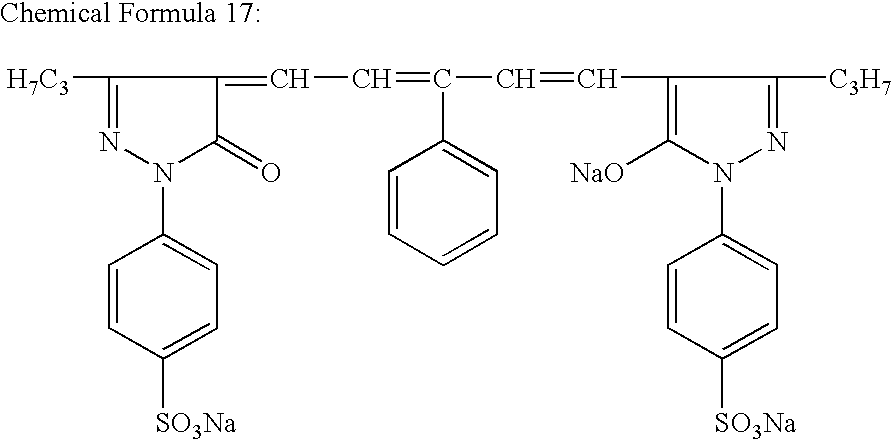Agent for inducing receptor potential
a receptor potential and agent technology, applied in the field of inducing receptor potential, can solve the problems of blindness after gradual progression and remain obstacles to overcom
- Summary
- Abstract
- Description
- Claims
- Application Information
AI Technical Summary
Problems solved by technology
Method used
Image
Examples
Embodiment Construction
[0025] Agent for Evoking Receptor Potential
[0026] Four compounds in Table 1 as polymethine organic dye compounds were examined whether they had any potential of evoking receptor potential in accordance with the intracellular calcium experimental method disclosed in "Jikken-Igaku" (Experimental Medicine), Vol. 7, No. 6, edited by Yuko Ichinohe, published on Apr. 5, 1989. The organic dye compounds represented by Chemical Formulae 14 to 17 are commercialized by Hayashibara Biochemical Laboratories Inc., Okayama, Japan, under the trade names of "NK-2761", "NK-5962", "NK-3041", and "NK-3630", respectively.
1 TABLE 1 Fluorescent intensity Organic dye Without With Intracellular compound calcicludine calcicludine potential Chemical Formula 14 Increased Unchanged Detected Chemical Formula 15 Increased Unchanged Detected Chemical Formula 16 Increased Unchanged Detected Chemical Formula 17 Increased Unchanged Detected
[0027] After 10-day-old fertilized eggs were sterilized with 70% (v / v) aqueous...
PUM
| Property | Measurement | Unit |
|---|---|---|
| pH | aaaaa | aaaaa |
| cell density | aaaaa | aaaaa |
| concentration | aaaaa | aaaaa |
Abstract
Description
Claims
Application Information
 Login to View More
Login to View More - R&D
- Intellectual Property
- Life Sciences
- Materials
- Tech Scout
- Unparalleled Data Quality
- Higher Quality Content
- 60% Fewer Hallucinations
Browse by: Latest US Patents, China's latest patents, Technical Efficacy Thesaurus, Application Domain, Technology Topic, Popular Technical Reports.
© 2025 PatSnap. All rights reserved.Legal|Privacy policy|Modern Slavery Act Transparency Statement|Sitemap|About US| Contact US: help@patsnap.com



